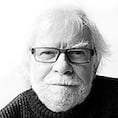In 1975 Bob Dylan went on an American odyssey with a bunch of fellow musicians and performers in what turned out to be a legendary episode in his career, lauded by fans and critics as producing some of the best interpretations of his work. Playing relatively small venues – often at short notice – the Rolling Thunder Review was originally captured in the overlong and over-indulgent home movie Renaldo and Clara.
Now Martin Scorsese’s Netflix documentary Rolling Thunder Review and the recently released 14-CD box set returns us to the era and the carnivalesque minstrel shows that, not least, were notable for the reunion of Dylan with Joan Baez. Along the way, a young Bruce Springsteen and Patti Smith were among those who turned up to witness the spectacle.
Almost hidden among the many live-performance gems – the beginnings, it would now appear, of his continuous and ongoing reworkings and reinventions of his classic compositions – is an intriguing version of the great Dublin ballad, Easy and Slow. As a longtime fan it was a surprise to hear him sing a song that charts my native inner-city pathways – from Christ Church to “beyond in the Park”, reminding me too of a remark he made in his Nobel speech: “If a song moves you, that’s all that’s important”.
Dylan’s version, with only the singer’s guitar as accompaniment, was recorded during rehearsals in a hotel in Falmouth in Maine on October 29th that year. It stands its ground among the many recorded versions, even if his tongue slips and slurs somewhat as he makes his way “down to the Iffey...”. He makes a better fist of other local references: Thomas Street, Christ Church, and Kingsbridge (which perhaps only older Dubliners use since that landmark was renamed to honour the 1916 patriot Sean Heuston in the 1960s).
The appreciative Falmouth applause for Easy and Slow comes from an audience that sounds like a roomful of his fellow troubadours sitting in on the rehearsal – there is no evidence among the many other 1975 concert recordings that he actually performed it elsewhere on the tour.
The provenance of the song itself might, like others from our ballad tradition, be a matter of some contention. In his Songs of Dublin, song-collector Frank Harte tells us that the first person he heard singing it was Dominic Behan, who claimed he picked up some of the verses from playwright Sean O’Casey. O’Casey had used it in his Dublin Lockout play Red Roses for Me in the 1940s. That play’s title was later borrowed by The Pogues for their debut album.
Although he settles on a style that does not stray from the lilt of the melody, Dylan’s rendition is sung with gusto and clarity and more than a little Dylaneque intensity.
But what was the impulse that drove him to this song of Dublin and from whom did he learn it?
Although Ronnie Drew and the Dubliners are more closely associated with it, it is fair to speculate that, as with other riches from the Irish songbook, it was the Clancy Brothers and most likely Liam Clancy, once identified by Dylan as “the best ballad singer I ever heard”, who introduced the Minnesotan to this tale of romance by the Liffeyside.
In their Greenwich village days, Dylan had already picked up the more rousing rebel ditty Roddy McCorley from the Clancys, as Howard Souness reminds us in Down the Highway, retelling the story of how he was enticed to sing it in Tommy Makem’s New York pub after the stellar 30th anniversary concert in Madison Square Garden in 1992.
The other connection between Dylan and a song with roots in Dublin is Brendan Behan’s The Auld Triangle. Recorded with The Band in Woodstock, in the heady days of Big Pink and the Basement Tapes, it turned up on the Bootleg Series Vol 11 after years of unofficial circulation.
The singer and The Band had also recorded a version of the Wild Mountain Thyme, adapted from an old Scottish tune and made famous by the Belfast trad group The McPeakes and which entered the repertoire of many folk artists, not least Dylan’s early compatriots, Baez and The Byrds. For several decades, he regularly featured the ballad on stage, including a beautiful and tender Nashville Skyline-style version at the Isle of Wight festival in 1969.
Needless to say nothing out of the kitbag of Irish balladry was included in the singer’s recent Kilkenny setlist, nor – as far as I am aware – on any occasion on which he performed in Ireland. Not even Arthur McBride, which he included on his 1992 album Good as I Been to You when he took the trouble to honour Paul Brady and Andy Irvine with a faithful replication of their version.
Hearing Dylan’s Easy and Slow made me wonder whether the singer might have been aware of his proximity to the scenes described in the song when he gave his most intimate Irish performance in Vicar Street in 2002.
Whatever about the authorial origination of the song, its singer-narrator takes a route (“We wandered by Thomas Street down to the Liffey...”) that heeds the advice of the Tyrone novelist William Carleton, who after a visit to Dublin’s Liberties in the 1820s wrote that Thomas Street was the place “where true Irish characteristics can be best observed ... we would recommend a walk to Thomas-street, on a Saturday evening in summer. Here flock the ballad-singers, the news-vendors, and the story-tellers ...”














